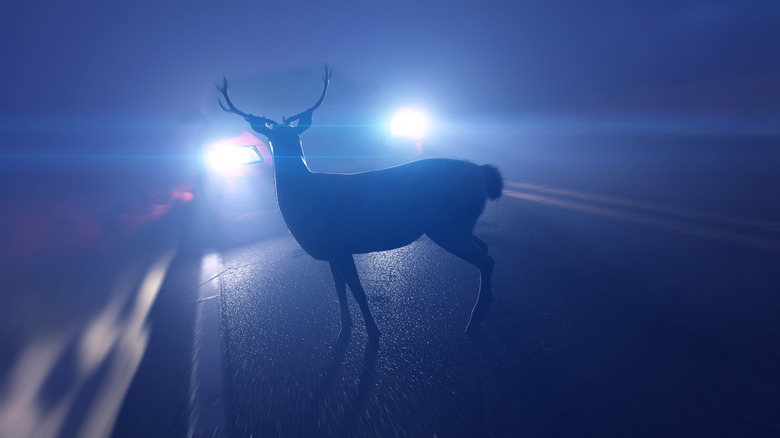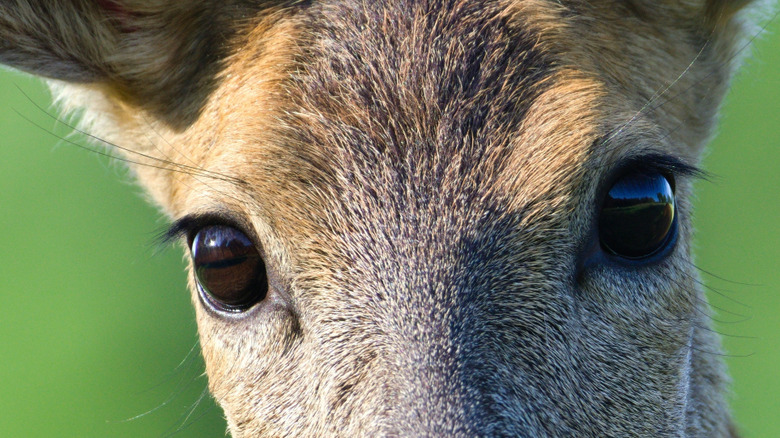If You've Ever Had A Deer Freeze In Front Of Your Car, Here's Why
If you've ever been so surprised by something that you simply freeze in place, staring slack jawed, you might have been told that you look like a deer in the headlights. Worse, you may have actually encountered a deer late at night on the road, and stared into its eerily glowing eyes, waiting for it to make a move. To the unknowing observer, it would seem that the deer is doing the dumbest possible thing by freezing in the face of danger, but this reaction has nothing to do with intelligence. It's all about the way deer see.
Deer are active around sunrise and sunset, making them neither nocturnal nor diurnal, but rather crepuscular. Their eyes have evolved to function in dim lighting, with pupils dilated to create a path of light through the eye even at dusk. But when a car's headlights suddenly strike those light-sensitive eyes, the glare instantly overwhelms the deer's vision, temporarily blinding it. Think of a camera flash going off right in your face. The deer is incapable of seeing the danger, much less how to escape it, so instead it does nothing, freezing in place.
If a deer freezes in front of your car, the best thing to do is to first stop and check that the road is clear for the deer to escape. Next, turn off your headlights so the deer can gain its vision, then honk your horn to alert it to the fact that there is danger present. That should make it scram.
Deer eyes versus human eyes
For deer living in a human's world, eyesight is a serious weakness. The eyes of deer are very different from those of humans, and not just in terms of how they dilate. Humans and deer both have the same two types of photoreceptor cells in their eyes: rods and cones. Rods are extremely sensitive to light, but don't perceive much detail. Cones sense colors and fine details, but they don't function well in dim lighting. Compared to humans, deer have far more rods, making them much more sensitive to light. This is a double-edged sword, as deer are animals with good night vision, but they are also completely overwhelmed by bright things like headlights.
On the other hand, deer have fewer cones in their eyes than humans, which makes it much more difficult for them to perceive details. In fact, estimates of deer eyesight place them between 20/60 and 20/200 vision, the lower end of which would make them legally blind by human standards. That certainly doesn't help a deer trying to find a safe escape route in the face of an oncoming car.
But what about the eerie way that a deer's eyes light up when it get caught in the headlights? That's because deer are among the animals that have a tapetum lucidum, a special membrane behind the retina which reflects light like a pair of miniature high-beams.

